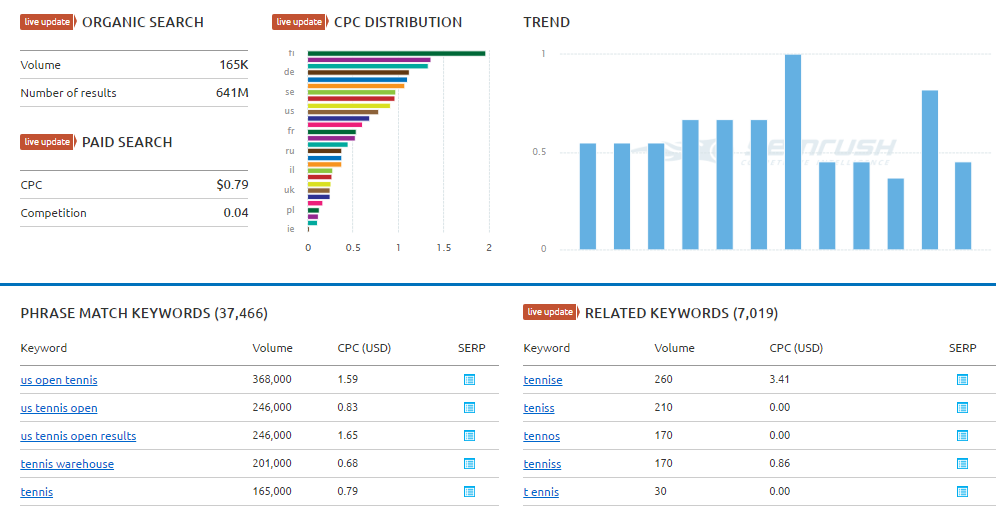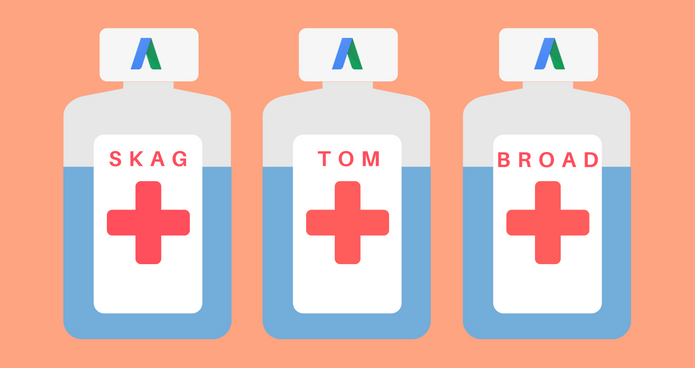If you’re looking to gain quick online visibility and sales revenue, an AdWords campaign is often a great place to start.
It can take a while to build momentum from content marketing, SEO, social media marketing, email marketing etc. However, Cost Per Click (CPC) campaigns can deliver you in-market customers in a matter of days, if not hours.
But, there are times the gains from your AdWords strategy can begin to fizzle off.
It’s hardly a matter of not trying. You’ve got your keyword analysis done right. Your competition analysis has been on point. You followed Google’s directions to organize keywords into ad groups based on your product categories. You even saw traffic and conversions come in.
Yet you’ve hit some sort of an upper limit on your results.
Perhaps it’s time to reorganize your AdWords campaigns into layers that can help you build on your gains and align it with your digital marketing strategy and overarching business goals.
You already have a good start since you know which keywords are working better than others based on your current campaigns.
Here’s what you do now:
1. Create your high-performance foundational Single Keyword Ad Groups (SKAG) campaign layers
Unfortunately, it’s quite common to see businesses spending more than they should on their AdWords campaigns.
Avoid this by implementing SKAGs. Basically, SKAGs contain just one keyword that is super specific to the product/service you are selling. All the ads in individual SKAGs should be super specific to that keyword.
This way you make certain that your ad message is as relevant as possible to the keyword that the prospect is ‘searching’ for on Google. This message match will bring your in-market visitor that much closer to clicking on your ad. If your landing page delivers on the promise in the ad, this visitor could soon be a customer.
Since the SKAG tactic ensures that there’s an almost perfect alignment with your keyword and the ad message, your click-through rates (CTR) will improve.
This makes Google happy enough to reward you with a higher quality score that reduces your cost per conversion. That’s what you want!
These SKAGs are the foundation layer for your AdWords campaign and will deliver you a steady stream of potential customers and revenue.
Look to your older campaigns to identify high performing keywords for the SKAG layers.
TIP: Investigate your ‘search terms’ to identify the best keywords for your SKAGs. These ‘search terms’ are the actual search strings input by the user. These strings will give you a better idea on the common usage of keywords from a prospect’s perspective. The CTRs of these keywords tell you what message match the user found relevant enough to click on your ad. Use this information to identify potential improvements to your ad message relevancy.

You’ll find pretty much all you need to be up and running with your SKAGs in the link I provided earlier in this section.
TIP: Create separate SKAGs for the search network and the display network. This gives you better control over search and display optimization. Take note though, that the tactic may not work for highly-niche sector keywords (due to lack of publishing opportunities on the display network).
As you populate your SKAGs with your high performing keywords from your original campaigns, remember to ‘pause’ them in those earlier campaigns.
2. Create the Top of Mind (TOM) remarketing campaign layers
There are plenty of reasons why a visitor will not immediately turn into a customer in spite of the best SKAG implementations such as:
- The need to research other products
- More time required to research your offering
- May need to get peers involved in the decision-making process
- Need to find a more opportune time and place to convert
- Delay the purchase decision until later for budgeting reasons
Since SKAGs do such a great job in bringing high-interest clicks and traffic, it makes sense to follow up. However, you may not have enough information to conduct that follow-up. e.g.: The visitor may not have filled up any forms.
Here’s where you can use the AdWords remarketing options to show ads to users who have already visited your website. This tactic can increase your ROI on AdWords spend by ensuring that your ads follow up on high-interest visitors who left without a conversion.
You can get really ROI oriented by retargeting only those who have visited a specific set of pages or those who have not made a purchased or converted. You can even create custom combinations of audiences to upsell/upgrade to such that only those who have purchased a product will see the ad for upsells/upgrades.
Create these remarketing audiences right within AdWords. Or use Google analytics, which I prefer, as it gives me better control over targeting prospects. For example, if I wanted my ads to show to visitors who stayed for more than 3 minutes and/or more than 3 pages, I prefer to create my remarketing audience in Google Analytics.
IMPORTANT: For your TOMs, I recommend that you decide which visitor behaviors are to be classified as ‘high-interest’. Then build remarketing lists that target these behaviors. Doing so will ensure that your TOM layer is more conversion-oriented than brand-awareness oriented.
Check out this ultimate guide to remarketing for more details on remarketing options.
3. The broader net AdWords campaign layers
The two previous layers allow you to laser-focus on those closest to your growth engine, the in-market customers. To increase revenues you can optimize those layers based on different metrics including bounce rates, bids, average ad position, and cost.
There comes a time however, depending on your niche, when just the two layers listed above are insufficient to scale the business. Reasons can include:
- You have reached a plateau with your SKAG and TOM layers and need to scale revenues
- The competition is ramping up on their brand awareness campaigns and your brand is getting buried
- You need to reach new audiences
- You need to create more awareness about your product/services and have to populate the top of your funnel so your lead nurturing engine can lead them to the conversion
This is when you need to cast a broader net. Seek out secondary keywords that are still relevant to your product/services but probably not a perfect match. For example if you are only selling ‘Yellow Tennis rackets’ in your SKAGs, your broader net ad groups would contain
- ‘colored tennis rackets’
- and maybe ‘tennis rackets’
- or even ‘tennis’
See what I’m getting at?
The broader the keyword relevancy, the more likely it is that there’s more effort involved in nurturing a prospect towards final purchase.
However, the increased brand awareness for ‘yellow tennis rackets’ among the tennis community in general, can result from the broader reach.

If you have got this far, you have probably used ‘Keyword Match Types’ in SKAGs. Depending on your product/service niche it may be beneficial to also implement these in your broader net AdWords campaigns.
So you may choose to use keyword match types such as:
- tennis rackets – this is a broad match type which is the default. The AdWords system runs your ads on relevant variations of the keywords ‘tennis rackets’, including synonyms, singular and plural forms, possible misspellings, stemmings (such as floor and flooring), related searches, and other relevant variations. E.g.: ‘choosing a good racket’
- +tennis +rackets – This is a broad match modifier that tells AdWords that any search should contain the words ‘tennis’ and ‘rackets’ (or close variations, except synonyms) to be considered relevant
- “tennis rackets” – putting the target keywords within quotes creates a phrase match. This lets AdWords know that these exact keywords and close variants of this exact keyword, with additional words before or after, are relevant
- [tennis rackets] – With exact match, your ads will appear when someone searches for your exact keyword, without any additional words before, after, or in the middle of your keyword
As you can deduce, the broader the match the more times your ads will be shown. The narrower the match the more possibly relevant the user’s intent is in relation to your product/service.
TIP: Always research keyword volumes. You can use Google Keywords Planner or a tool like SEMrush (affiliate link) for even more details.

You could choose to layer the ‘narrower broad net’ keywords and the ‘broader broad net’ keywords into different campaigns themselves.
Using your broad net campaign you may also discover high relevancy search terms that you can include in your SKAGs.
The objectives of your broad net campaigns could be:
- To create broader awareness
- Funnel additional highly-relevant keywords and audiences to the other conversion focussed campaign layers like the SKAGs and TOMs
TIP: Display networks are great additions to the broad net campaigns. You can use a variety of targeting methods including ‘topics’ of interest. This gives you the ability to target text and banner ads at a broader audience for a relatively lower cost when compared to purely keyword-driven campaigns.

Optimizing your AdWords campaign layers based on business objectives
Now that you have your AdWords campaign layers set up you can begin adjusting one or more of the layers to suit your business objectives. Think of which specific AdWords campaign will make the most impact on your engine of growth, for a specific goal in time, and fine-tune your layers accordingly.
For example, if you notice that your traffic levels and leads or conversions are dropping or if the competition has launched a broader awareness campaign, you can increase the spend on the broad net campaigns. Or add more keywords to that campaign while also targeting additional ‘topics’ in your display campaigns.
Similarly, if you want to increase your conversions you could choose to double down on your SKAGs by optimizing those campaigns for bids, relevancy, ad quality, and many other available optimization options.
A well-implemented AdWords strategy is vital to lower customer acquisition costs as well as higher return on investments. Layering your AdWord campaigns allow you the flexibility to adapt nimbly to market and business realities.
What strategies do you use to ensure that you’re getting the best out of your AdWords strategy?
